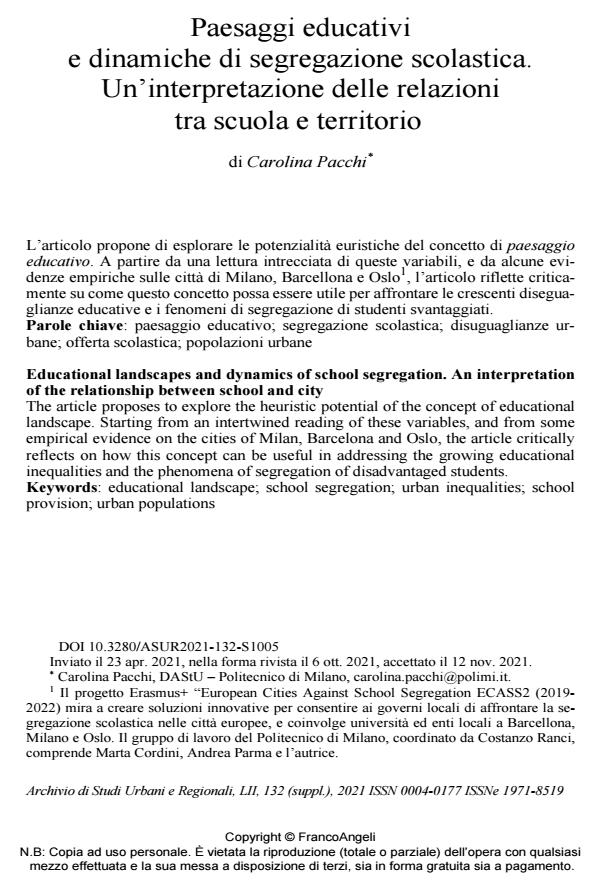Paesaggi educativi e dinamiche di segregazione scolastica. Un’interpretazione delle relazioni tra scuola e territorio
Titolo Rivista ARCHIVIO DI STUDI URBANI E REGIONALI
Autori/Curatori Carolina Pacchi
Anno di pubblicazione 2022 Fascicolo 2021/132 Suppl.
Lingua Italiano Numero pagine 12 P. 74-85 Dimensione file 232 KB
DOI 10.3280/ASUR2021-132-S1005
Il DOI è il codice a barre della proprietà intellettuale: per saperne di più
clicca qui
Qui sotto puoi vedere in anteprima la prima pagina di questo articolo.
Se questo articolo ti interessa, lo puoi acquistare (e scaricare in formato pdf) seguendo le facili indicazioni per acquistare il download credit. Acquista Download Credits per scaricare questo Articolo in formato PDF

FrancoAngeli è membro della Publishers International Linking Association, Inc (PILA)associazione indipendente e non profit per facilitare (attraverso i servizi tecnologici implementati da CrossRef.org) l’accesso degli studiosi ai contenuti digitali nelle pubblicazioni professionali e scientifiche
L’articolo propone di esplorare le potenzialità euristiche del concetto di paesaggio educativo. A partire da una lettura intrecciata di queste variabili, e da alcune evi-denze empiriche sulle città di Milano, Barcellona e Oslo , l’articolo riflette critica-mente su come questo concetto possa essere utile per affrontare le crescenti dise-guaglianze educative e i fenomeni di segregazione di studenti svantaggiati.
Parole chiave:paesaggio educativo; segregazione scolastica; disuguaglianze ur-bane; offerta scolastica; popolazioni urbane
Carolina Pacchi, Paesaggi educativi e dinamiche di segregazione scolastica. Un’interpretazione delle relazioni tra scuola e territorio in "ARCHIVIO DI STUDI URBANI E REGIONALI" 132 Suppl./2021, pp 74-85, DOI: 10.3280/ASUR2021-132-S1005